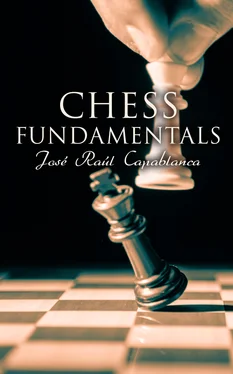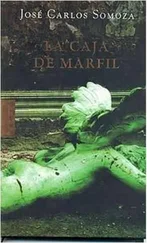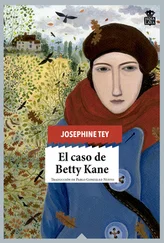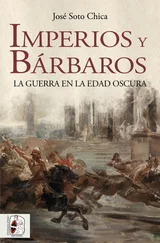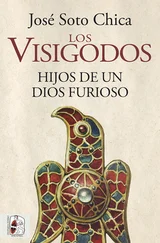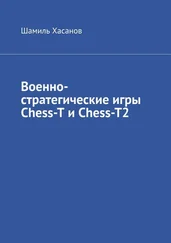|
5. Kt - B 3 |
K Kt - B 3 |
|
6. B - K 3 |
B - K 2 |
|
7. Q - K 2 |
|
It should be noticed that White does not Castle yet. The reason is that he wants to deploy his forces first, and through the last move force Black to play P - Q B 3 to make room for the Queen as White threatens R - Q 1, to be followed by P × P. Black's other alternatives would finally force him to play P × P, thus abandoning the centre to White.
|
7. ........ |
P - B 3 |
|
8. R - Q 1 |
Q - B 2 |
|
9. O - O |
|
With this last move White completes his development, while Black is evidently somewhat hampered. A simple examination will suffice to show that White's position is unassailable. There are no weak spots in his armour, and his pieces are ready for any manœuvre that he may wish to carry out in order to begin the attack on the enemy's position. The student should carefully study this example. It will show him that it is sometimes convenient to delay Castling. I have given the moves as they come to my mind without following any standard book on openings. Whether the moves given by me agree or not with the standard works, I do not know, but at the present stage of this book it is not convenient to enter into discussions of mere technicalities which the student will be able to understand when he has become more proficient.
Example 19.
|
1. P - K 4 |
P - K 4 |
|
2. Kt - K B 3 |
P - Q 3 |
|
3. P - Q 4 |
B - Kt 5 |
A bad move, which violates one of the principles set down, according to which at least one Knight should be developed before the Bishops are brought out, and also because it exchanges a Bishop for a Knight, which in the opening is generally bad, unless there is some compensation.
4...P × P loses a Pawn.
|
5. Q × B |
P × P |
|
6. B - Q B 4 |
Q - B 3 |
If Kt - B 3; Q - Q Kt 3 wins a Pawn.
|
7. Q - Q Kt 3 |
P - Q Kt 3 |
|
8. Kt - B 3 |
P - Q B 3 |
To prevent Kt - Q 5.
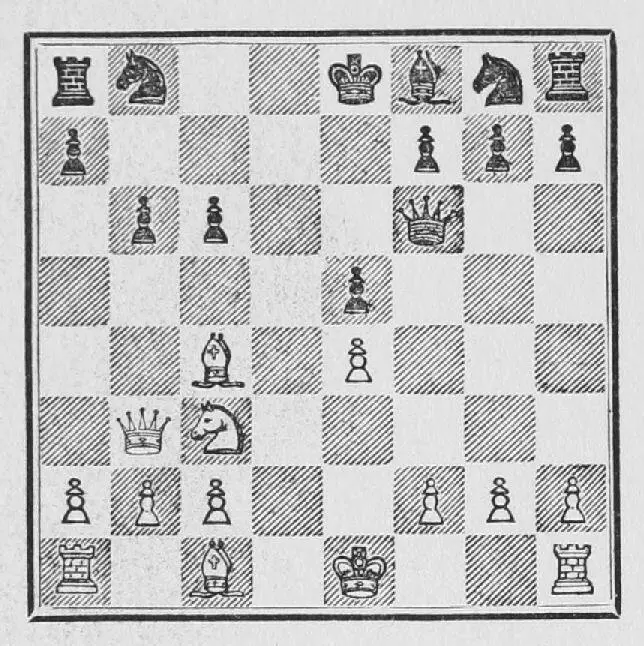
Black, however, has no pieces out except his Queen, and White, with a Bishop and a Knight already developed, has a chance of obtaining an advantage quickly by playing Kt - Q 5 anyway. The student is left to work out the many variations arising from this position.
These examples will show the practical application of the principles previously enunciated. The student is warned against playing Pawns in preference to pieces at the beginning of the game, especially P - K R 3 and P - Q R 3, which are moves very commonly indulged in by beginners.
8. TRAPS
I shall now give a few positions or traps to be avoided in the openings, and in which (practice has shown) beginners are often caught.
Example 20.
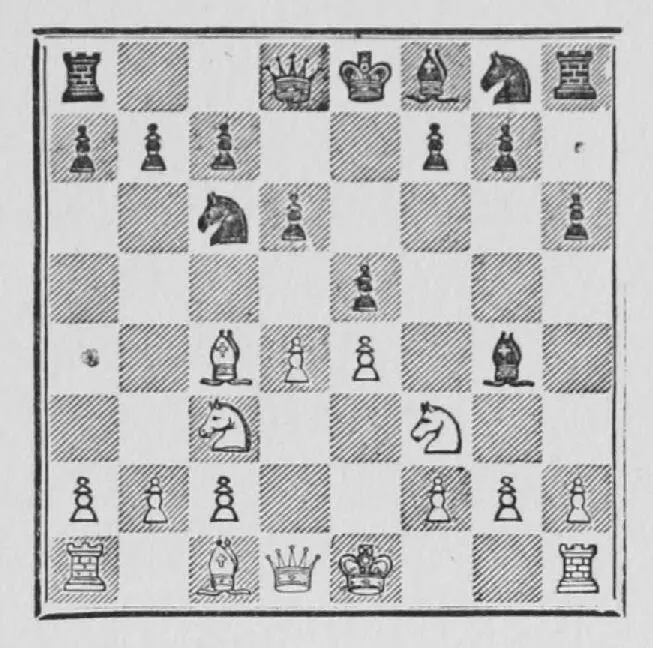
White plays:
Black should have recaptured with the Pawn.
|
2. Kt × Kt |
B × Q |
|
3. B × P ch |
K - K 2 |
|
4. Kt - Q 5 mate. |
|
Example 21.
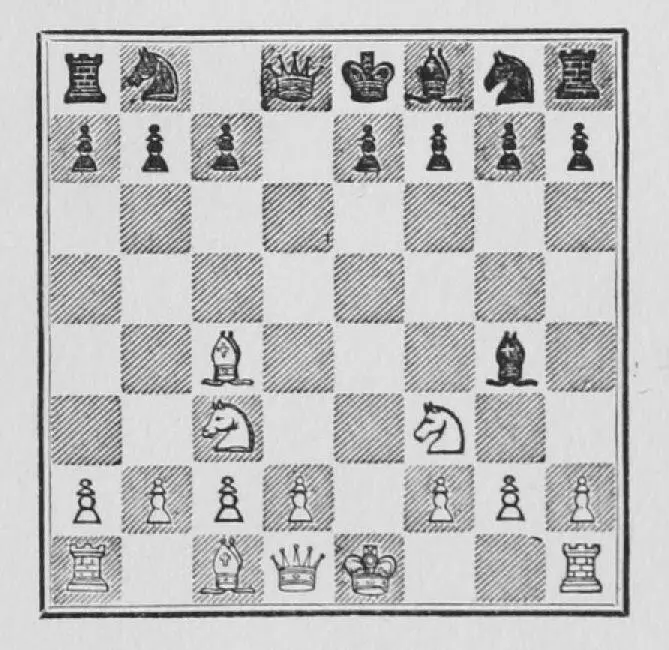
Black, having the move, should play P - K 3. But suppose he plays Kt - K B 3 instead, then comes—
Kt - K 5 would also give White the advantage, the threat being of course if B × Q; 2 B × P mate. Nor does B - R 5 help matters, because of 2 Q × B, 1... B - K 3 leaves Black with the inferior position. But White's move in the text secures an immediate material advantage, and the beginner at any rate should never miss such an opportunity for the sake of a speculative advantage in position.
|
1. ........ |
K × B |
|
2. Kt - K 5 ch |
K moves |
|
3. Kt × B |
|
and White has won a Pawn besides having the better position.
There are a good many other traps—in fact, there is a book written on traps on the chess board; but the type given above is the most common of all.
Конец ознакомительного фрагмента.
Текст предоставлен ООО «ЛитРес».
Прочитайте эту книгу целиком, купив полную легальную версию на ЛитРес.
Безопасно оплатить книгу можно банковской картой Visa, MasterCard, Maestro, со счета мобильного телефона, с платежного терминала, в салоне МТС или Связной, через PayPal, WebMoney, Яндекс.Деньги, QIWI Кошелек, бонусными картами или другим удобным Вам способом.
